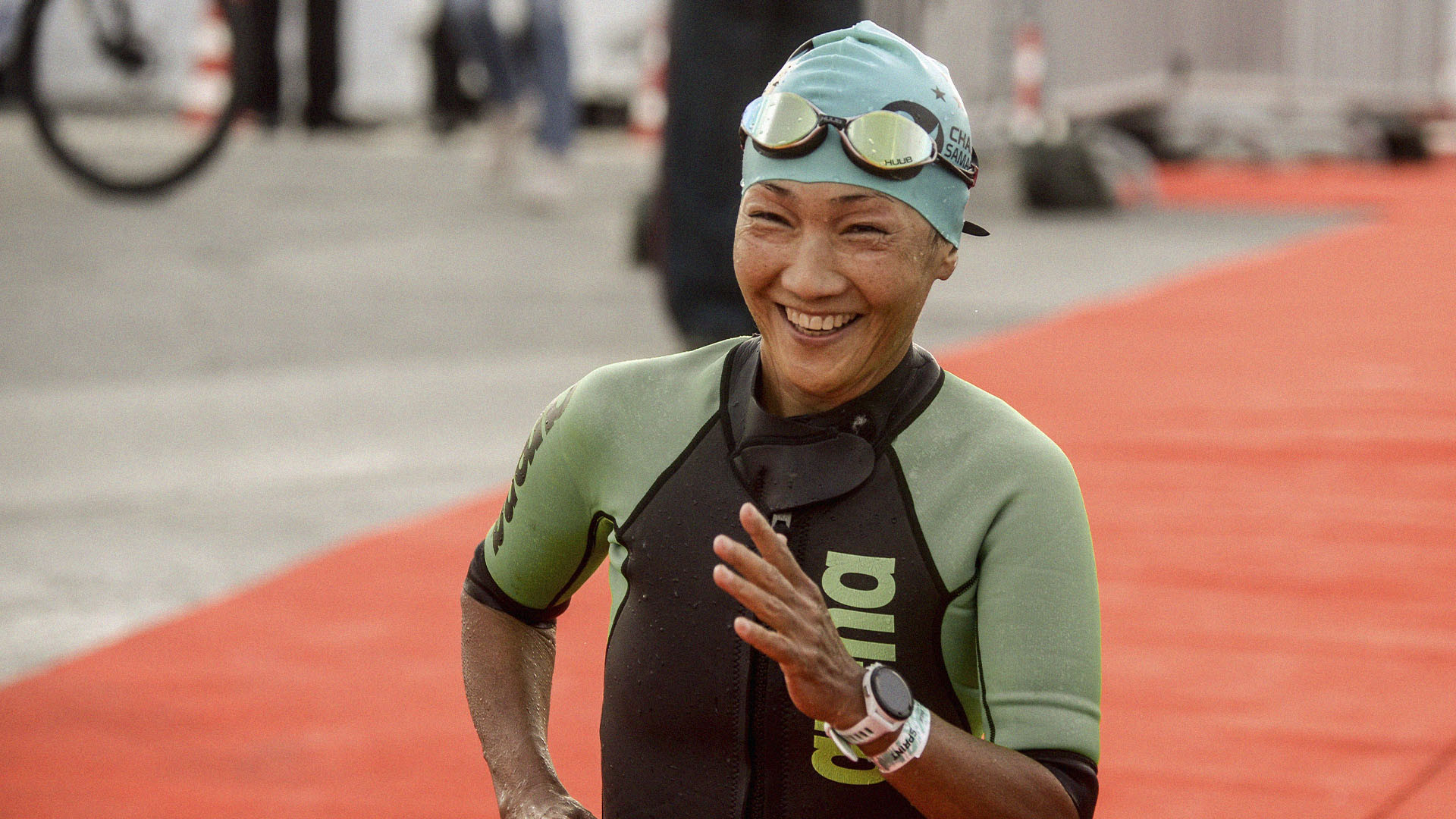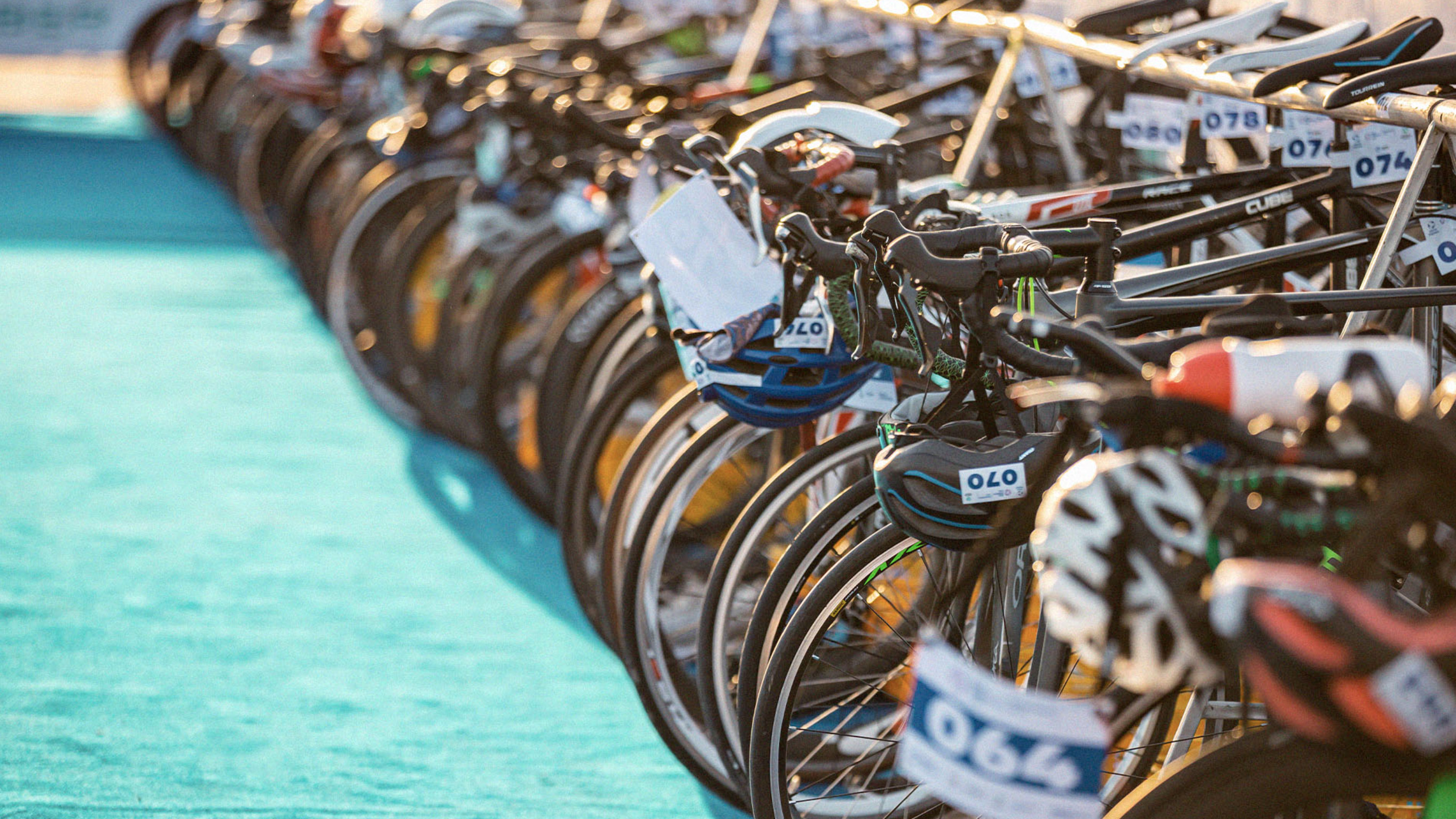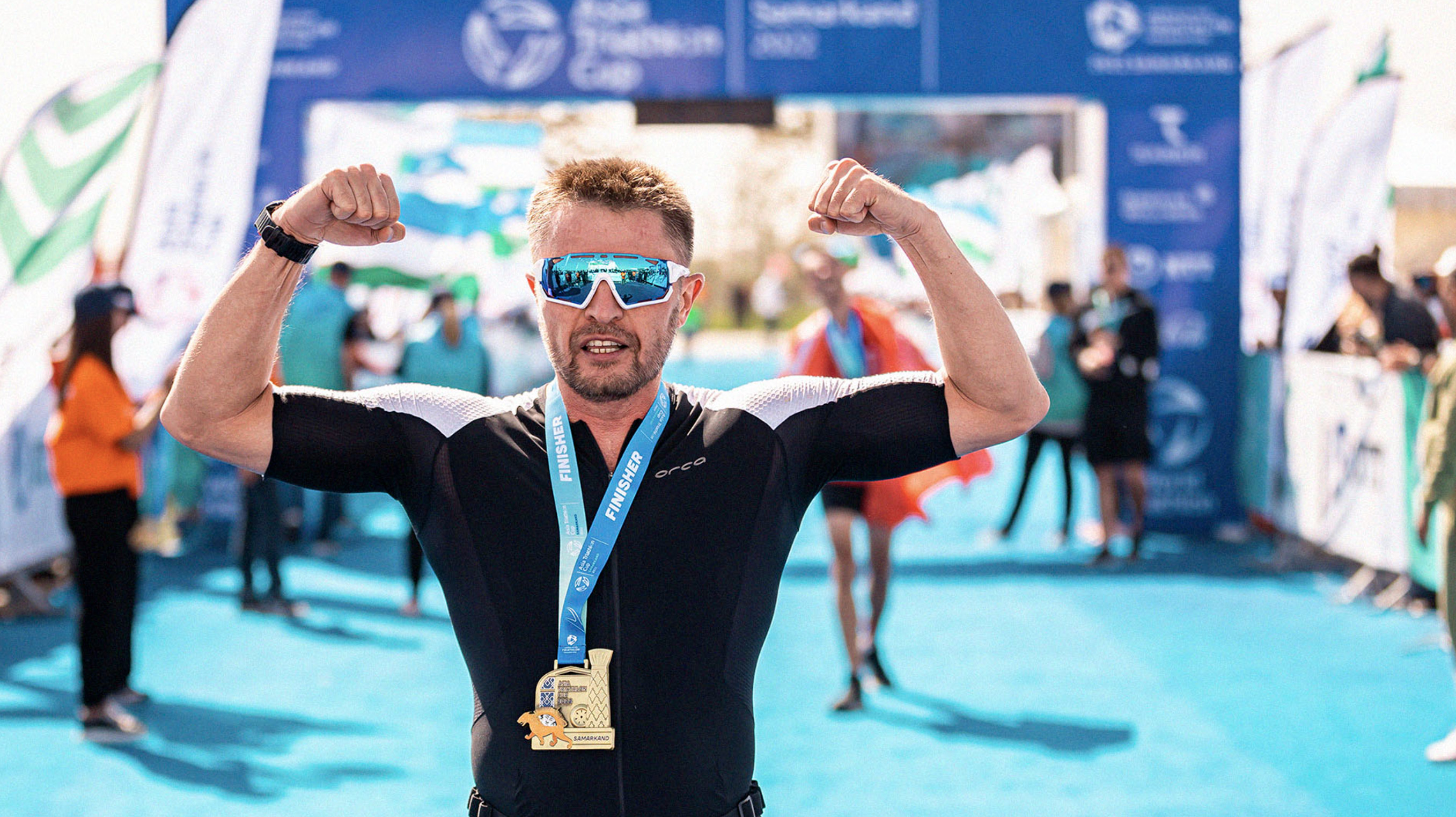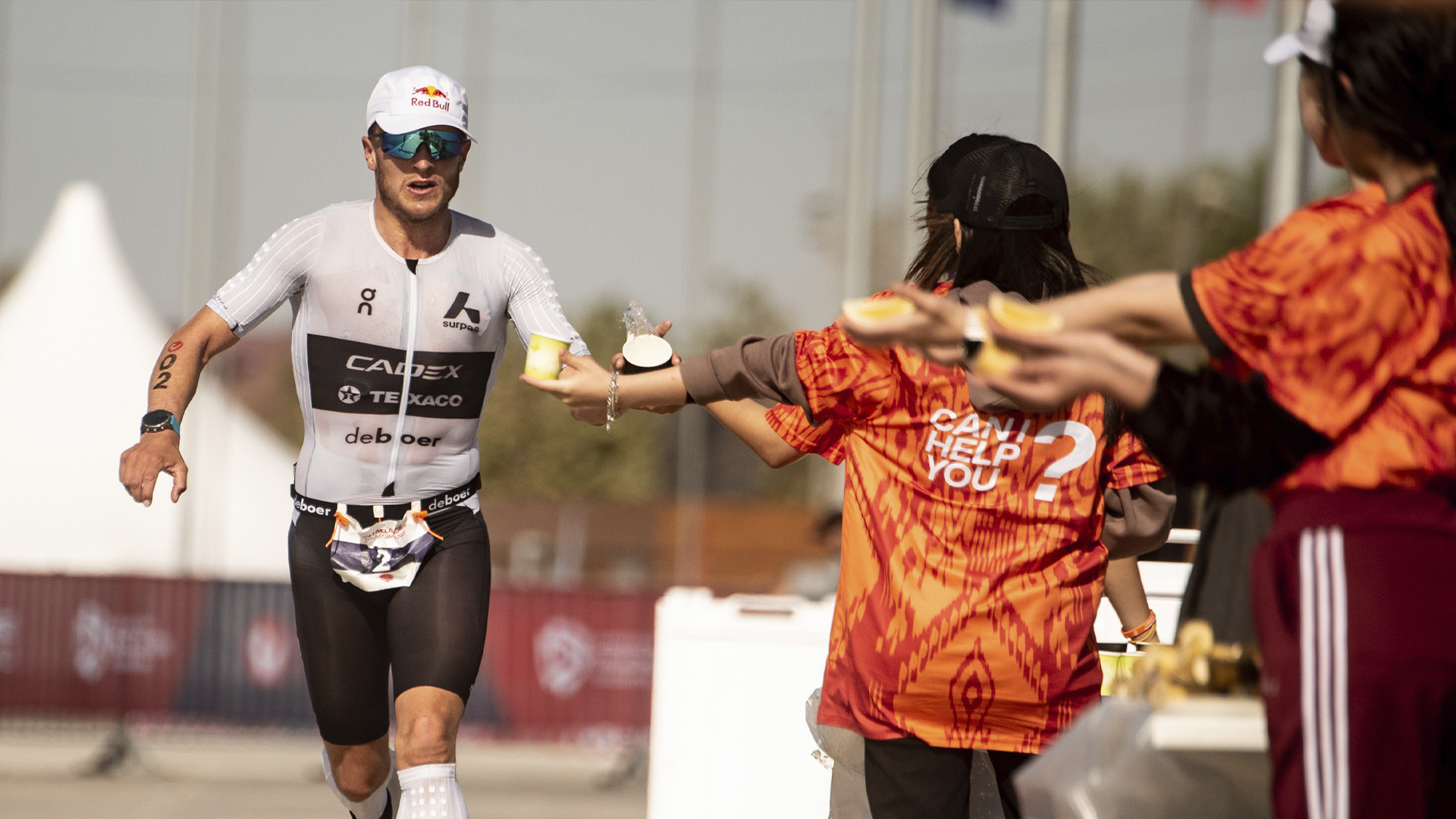- Home
- Recommendations
- Top Tips
- Dietary recommendations
They say that triathlon actually consists of four disciplines: swimming, cycling, running, and nutrition. If you’ve ever gone out for a workout on a hot or long day and ended up crawling back to your car, you know that an athlete is only as good as their engine. That engine needs high-quality fuel! This is especially important when it comes to what to eat before your first triathlon.
In preparing for a sprint triathlon, most of your swim, bike, and run workouts are done separately. On race day, when you combine all three activities without long breaks, sports nutrition becomes even more essential to support performance, prevent digestive issues, and help recovery. Race day can feel overwhelming, but having a step-by-step nutrition guide for your first sprint triathlon can make a big difference.
What to eat the evening before your first triathlon
The last meal the day before a race is meant to replenish glycogen stores, prevent fatigue, and reduce the chance of digestive issues. Feel free to eat as much as you like, but avoid overeating. Plan your pre-race dinner about 2.5 to 3 hours before bed to avoid going to sleep with a full stomach, as digestion can interfere with sleep.
Your pre-race dinner should resemble a typical meal on the night before an important workout. Think about what has worked well for you in training—did you feel strong the next day after having pizza the night before a rest-day run? If so, you’ve found your pre-race dinner. Regardless, the night-before meal should be rich in simple carbohydrates, low in fat and fiber, and moderate in protein. Avoid spicy foods, fried dishes, carbonated drinks, raw meat, and unfamiliar foods. Race time is not the time for culinary experiments; save that for the post-race celebration.
Examples of Pre-Race Dinners
Choose one. Add salt to taste.
- White rice, chicken, salad, roll, water
- White or sweet potato, chicken or lean beef, steamed green beans and carrots, roll, water
- Cheese pizza, salad, water
- Marinara pasta, lean protein of choice, and steamed low-fiber vegetables (avoid broccoli)
Tips for Your Pre-Race Dinner
- Plan to test your pre-race dinners and sports nutrition during training under conditions similar to race day to avoid unexpected issues on race day.
- Dine early, about 2.5-3 hours before bed, or even earlier to optimize a good night’s sleep.
- Enjoy your meal until you feel satisfied, but avoid overeating.
- Establish a “ritual” dinner during training that you can replicate the night before race day. Familiar food can help calm pre-race nerves and set the right mindset.
- Avoid drinking excessive water. Too much will make you visit the restroom frequently, dilute your blood, and disrupt sleep.
- While a glass of wine or beer may be part of your evening routine, alcohol—even in small amounts—can negatively affect sleep, hydration levels, motor skills, judgment, and overall performance.
What to Eat on the Morning of Your First Triathlon
You might not enjoy breakfast, but intentionally skipping it on race day is not the best choice. Studies show that eating before an event improves performance. Here’s why: overnight, liver glycogen maintains blood sugar levels and provides energy for recovery from the previous day’s efforts while you sleep. By morning, liver glycogen is low—think of a car with just a liter of fuel. It can only go so far before it’s empty. Eating—specifically carbohydrates—raises blood sugar and liver glycogen levels, helping prevent fatigue. But you don’t need a five-course meal; a small amount is enough for a sprint triathlon pre-race breakfast.
Try to eat breakfast 2.5-3 hours before the start of the race, giving enough time for digestion. If pre-race nerves are strong, try eating in small bites and slowly, or if you find it difficult to eat so early, go for a liquid breakfast as it digests quickly and provides hydration (smoothies can be your lifesaver in this case).
Breakfast should consist mostly of carbohydrates, low in fiber, a small amount of protein, and very little fat since fat takes the longest to digest and can lead to digestive issues.
Whatever you do, remember: nothing new on race day. As with your pre-race dinner, test your pre-race breakfast during training.
Examples of Race Day Breakfasts
Choose one:
- Bagel, 2 tbsp jam, 2 tbsp nut butter, one banana, water, coffee, or tea
- 1 cup cooked oatmeal, one banana, 1 tbsp honey, small Greek yogurt, water, coffee, or tea
- 500 ml sports drink consumed over a few hours (30-40g carbs per bottle), 1-2 pieces of toast, 2 tbsp nut butter or jam, 1 cup applesauce, water, coffee, or tea
- 1-2 waffles with maple syrup, 1-2 eggs or 2 tbsp nut butter, a side of fruit (avoid apples, as they may cause gas during activity)
What if I’m too nervous to eat before the race?
If breakfast doesn’t settle well on race morning, don’t worry—you have up to 20 minutes before the start to boost blood glucose levels. Based on when you can eat, choose one (not all) of the following recovery options:
Choose one:
- 90 minutes before race start: try drinking 12 oz sports drink and half a sports bar or energy chews. Aim for 1.5 grams of carbs per kilogram of body weight (1 kg = 2.2 lbs).
- 60 minutes before race start: no more than 1 gram of carbs per kilogram of body weight.
- 20 minutes before race start: no more than 20-25 grams of carbs.
Examples of Carb Sources Before the Race
- 300 ml sports drink
- Energy chews (20-50g carbs; 20-60 minutes before the race)
- 100-calorie sports energy gel
What to Eat During Your First Triathlon
Your pre-race meal should provide enough energy for the short swim, so you don’t need to worry about fueling until you’re on the bike. That’s when you’ll start eating during the triathlon.
It’s helpful to familiarize yourself with the swim, bike, and run course maps before race day. This will help you identify aid stations on the bike and run portions and what they offer. Usually, this information is on the race website or in emails from the race director. You may also find a course map when you pick up your race number. If you can’t find the information, contact the race director (contact details are usually on the race website) or ask a volunteer.
What to Consume During the Cycling Stage of a Sprint Triathlon
Not all sprint triathlons have aid stations on the bike course. However, even if your race has one, plan to bring at least one 500 ml bottle filled with a familiar and well-balanced sports drink of your choice. The ideal sports drink should contain a mix of sugars (such as glucose, sucrose, fructose, or maltodextrin), sodium, chloride, potassium, water, and 10-14 grams of carbohydrates per 250 ml. Sodium content should be at least 120 mg per 250 ml to enhance flavor, stimulate drinking, aid absorption, and maintain fluid balance/blood volume.
How to Choose the Best Sports Drink for Triathlon
During the race, begin drinking from your bottle as soon as you safely enter the flow of the race. Since calorie absorption takes time, start fueling early. Aim to take 2-4 sips on the bike every 6-10 minutes to ensure adequate hydration and nutrition for the run.
Pro Tip: Practice drinking while cycling during training, as this will save time and be less stressful than maneuvering through race traffic to stop at the roadside for a sip.
What to Eat During the Running Stage of a Sprint Triathlon
Most triathlon run courses have at least one aid station on the 5 km route. However, all races vary, so don’t assume. Aid stations may provide water and sports drinks, while some offer cola and ice. Depending on your physical condition, as well as the temperature and humidity, consider using aid stations for a quick, planned walking break to restore strength and hydration. This is a situation where slowing down actually makes you faster, as the more you can counter dehydration, the better your performance will be. Try to take 3-5 sips, then continue running.
Do I Need Caffeine During My First Triathlon?
If you regularly consume caffeine and want to use it on race day, approach it the same way as anything else you take on race day: test it in training first! Try caffeine during your workouts to figure out the right timing and dose, ensuring you get the desired effect on race day.
Caffeine’s most noticeable benefit is its impact on the brain, as it stimulates the central nervous system, reduces perceived exertion, and delays fatigue, improving mental clarity and focus. Contrary to popular belief, caffeine won’t make you superhuman if you’re tired, undertrained, or inadequately fueled. If you’re sensitive to caffeine and experience side effects, it’s okay to skip it.
How to Implement Caffeine in Your Race Plan:
Caffeine has been shown to enhance performance, but, as with anything, more is not necessarily better. Studies show that a dose of 2-3 mg/kg of body weight improves performance, while doses above 5 mg/kg offer no additional benefits. In fact, excessive caffeine can cause gastrointestinal distress—the last thing you want to experience during a race. Aim for the minimum amount that supports performance, and fine-tune this during training so you know exactly what works on race day.
Caffeine absorption begins within 45-60 minutes, so plan to take it well before you want to feel its effects. Caffeine-containing options include coffee, tea, cola, and sports products with added caffeine, such as chews and gels. Ideal times for caffeine intake are during your pre-race morning meal/snack and before the swim. Taking caffeine during the run is not recommended, as its effects would only kick in after you cross the finish line.
Final Thoughts
Just as you train your body for the task, train your stomach to handle the fuel you plan to use on race day. Use training to determine what works best for you, and then stick with it. Above all, avoid the temptation of shiny new products or what your neighbor is consuming. Stick to what suits you and follow the golden rule: Nothing new on race day!





